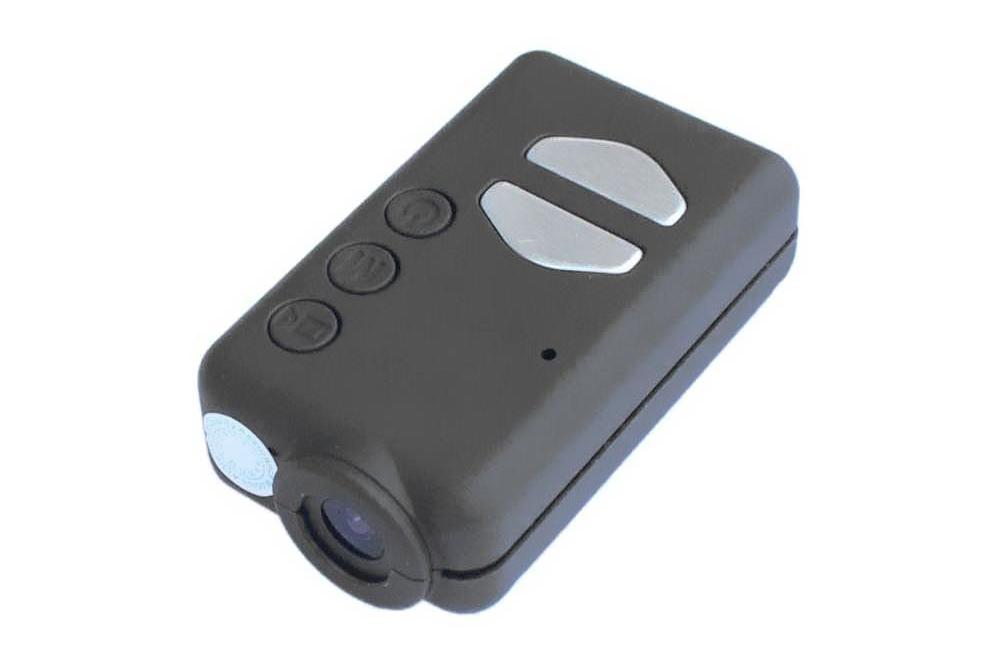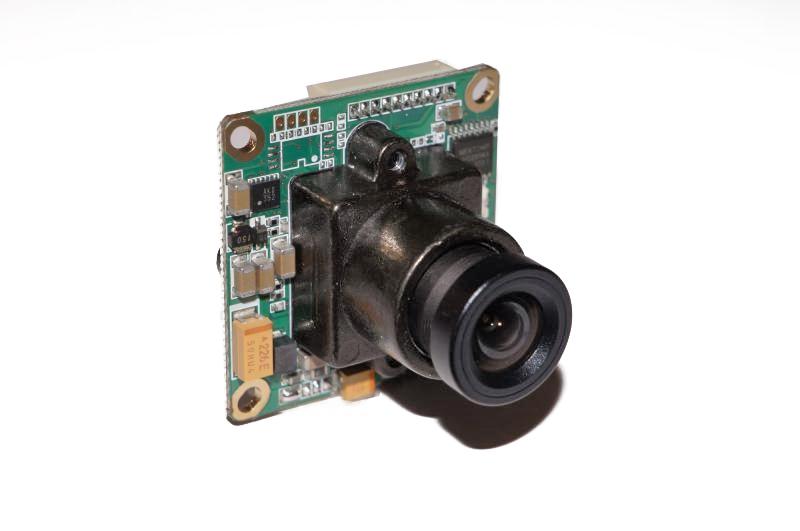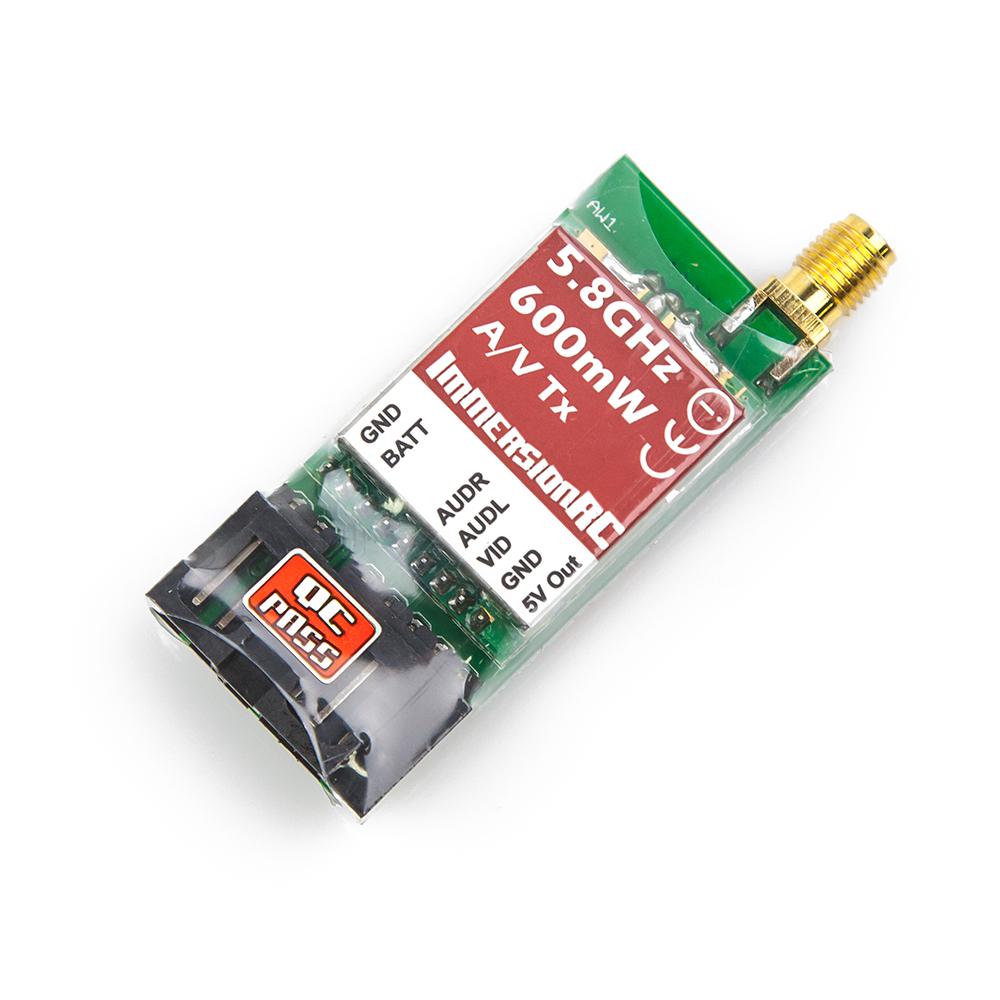Multi-Rotors, First-Person View, And The Hardware You Need
Video Systems: Cameras And Radio Gear
An FPV setup is defined by its video system. A camera is core to this setup, and there are various options to consider. Some enthusiasts even go so far as to use two cameras. The first one, of course, is FPV-specific, used for flying. The second is typically an HD camera that enables high-quality recording during flight. Those gorgeous vistas you see from quadcopters don't come from the same camera used to fly the multi-rotor, in other words.
There's always the option to use the recording camera as a flight camera with video-out cables, but quality and light management suffer compared to a purpose-built flight cam. Then again, if you don't need the ability to record your exploits, stick with a single camera. Your setup is going to depend largely on personal preference and available budget.
GoPro is the brand most enthusiasts favor for their recording cameras. The Hero3's high image quality, abundance of recording options, and compact form factor makes it ideal for multi-rotor applications. There are several alternatives, though. The action camera market is rapidly expanding, and similarly small recording devices aren't difficult to find.
One less-known solution comes from the Chinese brand Mobius. Its small, affordable action cameras offer respectable specs, though they're not quite up to par with GoPro’s high-end offerings. Still, lightweight and easy to mount, they’re not to be underestimated.
Compared to recording cameras, FPV “CCD” flight cameras deliver lower contrast, brighter images, and more dynamic response to rapid changes in light. In short, they're designed to help you see better, translating to confident piloting. As with so many of the components we're discussing, there are a great many options. Some are better suited to this specific hobby, but most can be made to work.
Manufacturer recommendations are perhaps your best starting point. Pay particular attention to the TV lines specification, which effectively means resolution. More lines give you higher quality, albeit at greater cost.
All FPV-based setups, by their very nature, consist of a camera and a transmitter on-board, and a receiver and display device on the ground. As with any other broadcast, video is transmitted using radio signals. To some extent, you get to choose the frequencies you use for transmission, and this is an absolutely vital decision because it impacts the hardware you buy, the range you can fly, and the objects your signal can penetrate.
Get Tom's Hardware's best news and in-depth reviews, straight to your inbox.
Note that I mentioned frequencies, plural. Multi-rotors with FPV-based control schemes employ one frequency for the video and another for controlling inputs. You cannot use the same frequency for both due to interference.
Lower frequencies have much greater penetration through obstacles, and require less transmission power to travel the same distance. You'll find that those lower frequencies are reserved for the transmitter, since control range and penetration take priority over the video feed. Higher frequencies offer few advantages, other than smaller antennas, slightly sharper image transmission, and in some cases, bandwidth availability.
The frequencies most often used for FPV are 900 MHz, 1.2 GHz, 1.3 GHz, 2.4 GHz, and 5.8 GHz, with the latter two being most common. Others can be used as well, though the hardware is tricky to find.
Current page: Video Systems: Cameras And Radio Gear
Prev Page Speed Controllers And Batteries Next Page Video Systems: Antennas And Goggles-
gio2vanni86 Great article, and quite an amazing beautiful video shot at the end. Been seeing these around, and have really loved the idea of filming at a elevated level. I actually do hope you guys do more of these. I am bookmarking this for future reference. Thank you.Reply -
freiss Darn it, now you've piqued my interest. :-)Reply
As stated below, a rundown on build costs would be nice. Hey, you could even do a series of FPV articles akin to the PC builds...budget, mid-range, and enthusiast! -
Steveymoo So, how much would the components cost to lift a heavy DSLR with some decent glass? I is pretty curious.Reply -
es0 It would be awesome if you did build guides for different aircraft. I have begun building different ground based vehicles using arduinos and Pi's and would love to take to the skys next!Reply -
thechief73 Excellent article, nicely explained. Also glad to see someone in the media make a clarification from drones and multi-copters.Reply
FYI, DO NOT CALL THESE DRONES: Drones are for military use to kill people. These are, as the authors title states: multi-copters, multi-rotors, or RC model aircraft. By using the word "Drone" you give all the uneducated fear mongers and the law writers canon fodder to regulate this hobby into oblivion before it really gets a chance to take off. Some states and other countries have already passed laws that almost or outright make this hobby a CRIME!
I have been in the hobby about a year now and I have to say it is so far one of the most fun and rewarding things I have done. I will be doing this until I no longer have the means to do so. I highly recommend anyone that is interested in joining the hobby to buy a Hubsan X4 or one of the many similar RTF mini-quad models. This is widley regarded as the best way to learn how to fly a multi-rotor.
http://www.youtube.com/user/juz70/videos - not my channel, just really neat.
So, how much would the components cost to lift a heavy DSLR with some decent glass? I is pretty curious.
Just a few options: DJI S1000, SkyJib-8 Ti-QR, and CINESTAR-8.
It would be awesome if you did build guides for different aircraft. I have begun building different ground based vehicles using arduinos and Pi's and would love to take to the skys next!
Check out youtube, there are thousands of guide videos on the subject.
-
HKILLER i would highly recommend these 2 for those who that don't want to go through the trouble of the build and already have an smart device such as iphone or android ones...Reply
http://www.newegg.com/Product/Product.aspx?Item=N82E16886113011&cm_re=parrot-_-86-113-011-_-Product
and this cheaper model of it....
http://www.newegg.com/Product/Product.aspx?Item=N82E16814998083&cm_re=parrot-_-14-998-083-_-Product -
rmirwin2 There is one other regulating authority which is important to keep in mind for those seriously interested. In the US that would be the FCC, since transmission of quality RC and video signals over the available frequencies requires a Technician's class Amateur radio license. Many will find that a relatively easy thing to get that will also maximize the enjoyment of the hobby. Check in with ARRL.org, where you can get everything you need.Reply -
bluescrn Great intro to multicopters. But for beginners, it's best not to start out with a serious $500+ quadcopter, as there's a pretty good chance that you'll wreck it on it's first flight...Reply
Do yourself a favour and get a 'toy grade' mini quadcopter first, such as the Hubsan X4/Q4 Nano or similar. These are cheap, loads of fun, can be flown indoors, are much safer than the big ones, and are a great way to learn to fly a multicopter. Spend a couple of hours playing with one of these, and you'll significantly reduce the time/money spent on crash repairs when you start flying a more serious multicopter. -
bluescrn Oh, and if you go down the ready-to-fly route (or even if you self-build), try not to be the next idiot losing control of a DJI Phantom in a location where they shouldn't have been flying at all ( e.g. https://www.youtube.com/watch?v=_U8iHn_2l0U )Reply
Stick to quiet and safe flying locations, be aware of wind, line-of-sight, and possible sources of RF interference. And don't rely too much on GPS/return-to-home - you might not have a GPS lock when you need it (or it might not have had a lock at take-off, to determine the home position!)



